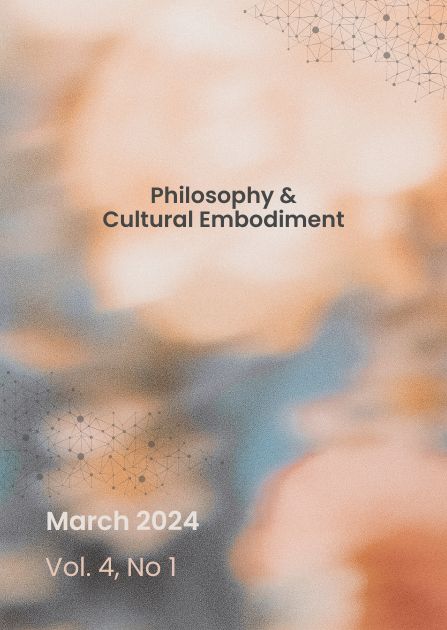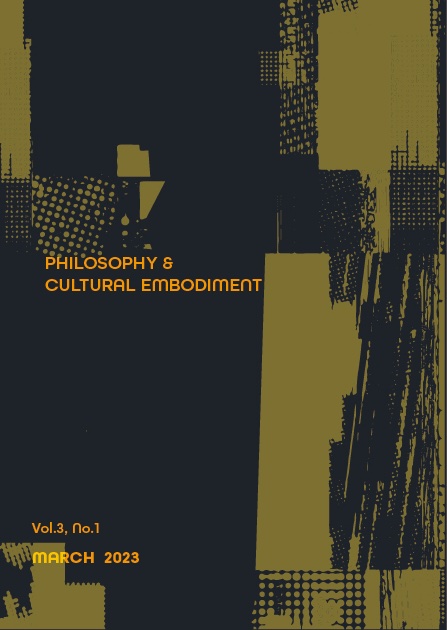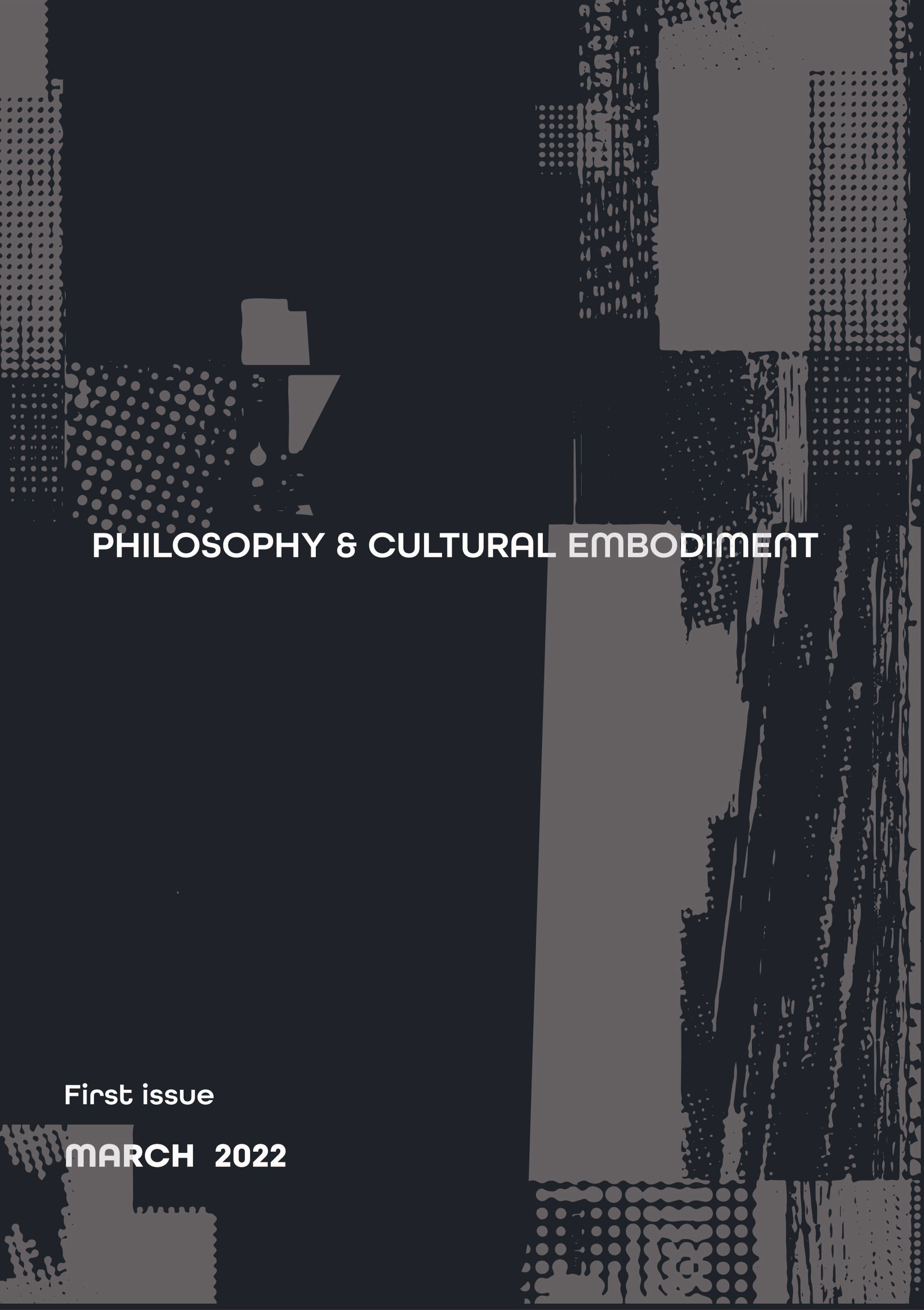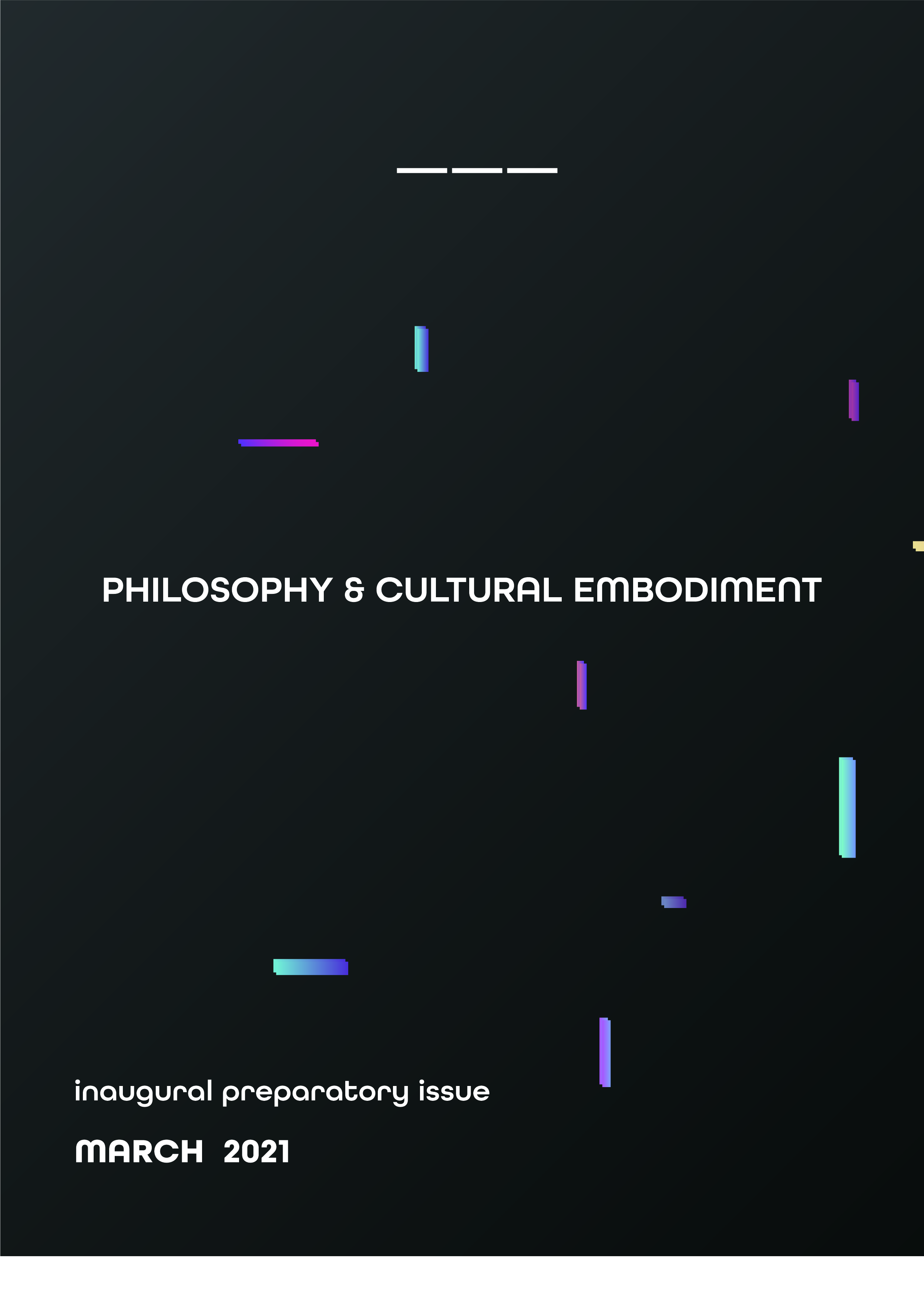- Top
- Previous Issues
PREVIOUS ISSUES
Vol.4, No.1 | April 2025


Ryan Fleming, The View from Cloud Gate: Notes On the Northern Zhou Suburban Sacrificial Hymns"
Aya Watanabe, Jay McKinney, and Eliot Steiner, Values in Practice: Contextualizing the p4cHI Style Approach in Japanese Education
Vol.3, No.1 | MARCH 2023


Shojiro KOTEGAWA, Can Japanese Literature Contribute to the Contemporary Debate on Race ?"
Abstract
There are very few works in Japanese literature which focus on race. One of the main reasons is the illusion shared by many Japanese that Japan is a “mono-racial nation” and therefore free from racism. This illusion has prevented race from being regarded as a suitable theme for Japanese literature. In order to counter this illusion, this paper will focus on some exceptional works in Japanese literature that have addressed race head-on, and examine how Japanese literature can contribute to the contemporary debate on race.
This contemporary debate has revolved around the idea that race is socially constructed, that race has no genetic or biological basis. Philosophy of race has focused on racism as embedded in social and institutional structures and the subconscious or unconscious levels of consciousness rather than on intentional, individual racism. However, it has been difficult to clarify why race is “seen” or “heard” by discriminators, and why the discriminated are bound or forced to adapt in various situations to the racializing perception of the discriminator. Relying on Merleau-Ponty’s theory of embodiment, the phenomenology of race has attempted to overcome these difficulties and approach the depths of racism by elucidating racist attitudes and behaviors in terms of “embodied habits” (Alcoff 2006; Al-Saji 2014; Ngo 2017).
In what ways, then, can literary works contribute to the philosophical clarification of racism? Literary works do more than provide examples for philosophical theories (nothing would be more tedious or even blasphemous than to read a literary work only as an example of the validity of a philosophical theory). In my view, a good literary work, through its vivid descriptions, shows us how racism is embodied in our bodies. And through that it makes visible the various aspects of racism that philosophical theory has not been able to show. In what follows, I will discuss the ways in which racism is portrayed by three Japanese writers and examine what can be seen in their works.
Minae INAHARA, A Dialogue between the Body Schema and the Body Image: A Case of Mild Athetoid Cerebral Palsy
Abstract
This paper reflects on my lived experience as a person with mild athetoid cerebral palsy and explains how my condition requires a phenomenological first-person narrative in order to be adequately understood. Shaun Gallagher (2005) has clarified Maurice Merleau-Ponty’s notion of body schema by drawing a distinction between both body schema and body image. In this paper, I shall draw attention to two senses of body image and argue that body schema and the body image, in both senses, of a person with cerebral palsy are intertwined with each other. Following a phenomenological analysis of the body, I shall explore a dialogical relationship between body schema and body images within myself, and suggest that a phenomenological account of cerebral palsy (a phenomenological model of disability) is required for me to give an account of my embodied self.
Tetsuya Kono, Phenomenology of Pain
Abstract
Some time ago, I climbed a mountain with my friend. As I gazed out at the brilliant autumn trees around us, my friend beside me was also looking at them. We talked with each other about the vivid colours of the trees, and admired the beauty of nature. My friend and I seemed to have shared an experience of seeing the trees. The objects of the experience, trees, must therefore be intersubjective. After a while, my friend suddenly began to complain of a headache. It was most likely caused by the thin air. I felt concerned about his physical condition, but I myself felt neither any headache nor any sickness. The headache seems to have been his individual experience, of which I could have no part.
In following this line of thinking, people have generally considered pain to be a personal, subjective, private, and unsharable experience. We can even say that it is through the experience of pain that we realize the fundamental separation between oneself and others. Pain is, in this sense, one origin of the sense of subjectivity. Because it is widely believed that no one but myself can access my pain, pain has provided a paradigm case for the Cartesian, solipsist theory of the mind.
However, reports from the domains of medicine, nursing, and medical anthropology on various pain experiences of patients have cast some fundamental doubt on our belief that pain is a private and unsharable experience. Can we say that pain is really a solipsistic experience? Actually, all of us know what pain is. Pain occurs at different parts of the body. There are also different modes of pain: piercing, drilling, tingling, burning, griping, stabbing, splitting, throbbing, smarting, cramping, sharp, dull, and so on. These modes of pain represent what and how the damage is done (that is to say, most words describing pain are verbs expressing actions on the body.) In spite of its diversity of locations and modes, we all know the essence of pain, even if it is difficult to define it in language. Pain is a common experience, and one of the few things that we can all assume that we have shared at some point in our lives. If so, why do we tend to think that pain is private and unsharable? Why pain is so often regarded as a kind of proof of our fundamental isolation from others? In this paper, I would like to examine the commonly accepted view of pain, and reconsider what pain is from a phenomenological point of view.
First issue (Vol.2, No.1) | MARCH 2022


Taku Uchiyama, Indexicality of Knowledge-How
If someone is skilled at something, it is usually said that they know how to do it. But what kind of knowledge exactly do they have? According to Stanley’s intellectualistic view, it is propositional knowledge, i.e., they know that a certain way is a way to perform the skill. Fridland objects to this view. She stresses the importance of the context-sensitive aspect of skill instantiation, namely the aspect that the skill must be carefully adjusted and attuned to the very particular features of the situation in which it is instantiated. According to her, the intelligence that is responsible for this aspect cannot be fully spelled out in the form of a proposition, no matter how fine we individuate the proposition. Thus, she concludes that the propositional approach of Stanley’s intellectualism is insufficient to capture the essential part of knowledge-how, which she supposes to be non-propositional. I think, however, that this move is too quick. In my opinion, the difficulty that Fridland points out is the difficulty with the indexicality, namely the difficulty that we face when we try to capture the indexically determined content in the form of a proposition. To establish this identity, I demonstrate that for each problem that Fridland finds in the propositional approach, there is a parallel problem in the discussion on indexicals. If the difficulty of the propositional approach has to do with the fundamental problems of indexicality, the former difficulty can be solved in the same way the latter problems are solved. Now, in the discussion on indexicals, there are some widely acknowledged approaches that enable us to deal with the respective problems. Those approaches can also be successfully applied to the problems with intellectualism. Adopting such approaches enables us to account for the context-sensitive aspect of knowledge-how within the propositional framework, thereby providing counter-arguments to Fridland’s objections.
(http://doi.org/10.14992/00022147)
Abstract
Satoshi Sako, Projection as a way of Embodied Learning:On Metaphor and Abduction
Recently, in the field of education and learning, “abduction” and “metaphor” respectively have been gaining attention. Considering Peirce’s rhetorical turn and connecting the two via the medium of “projection,” I explain, herein, that both “abduction” and “metaphor” are means of embodied learning, the first step of an inquiry (pre-model, pre-hypothesis).
(http://doi.org/10.14992/00022148)
Abstract
Many previous learning studies in educational psychology are dominated by a curious mixture of neobehaviorial and cognitive information-processing psychology, where the textbook or teacher is the “sender” of the “message” and the student is the “receiver” (Cunningham, 1992, p. 167). In this model, knowledge and information are transmitted through one way or turn-taking patterns. Freire (1990, chap. 2) points out that, with good intentions, this type of education (the banking concept of education) is a system of reproducing the oppressed in a cultural and political way. In addition, even most of the previous research on embodied knowledge or skills are of the type “expert-novice differences” (Suwa, 2019, pp. 169–170).
Conversely, researchers of semiotics or constructivism discuss the needs of studies that consider the interactions between teachers and students or the processes from a novice to an expert. On the one hand, some researchers have discussed the role of abduction as a mode of inference in scientific classroom explanations and argumentations (Adúriz-Bravo et al., 2019; Rapanta, 2018). On the other hand, the editors of the International Journal of Science Education published a special issue on “Conceptual Metaphor and Embodied Cognition in Science Learning,” which later became a book (Amin et al., 2018), although no reference was made to the concept of abduction. I see the concept of “projection” as a common point between abduction and metaphor. Herein, I will then integrate them under the idea of projection, which derives from a bodily experience, and develop them as a way of embodied learning.
Additionally, it is important to focus on Peirce’s rhetorical turn, which occurred around 1903 (Strand, 2013). This is because, by way of his rhetorical turn, Peirce changes his ideas about the scientific method, which includes abduction, and this change provides us with an important perspective vis-à-vis connecting abduction with metaphor. Furthermore, from an educational perspective, some researchers suggest that this type of semiotic study has an affinity for educational studies, especially constructivism.
Tetsuya Kono, My Ghost is Intertwined in the Networks: The Problem of Agency and Boundary of Self in Cyberspace
The COVID-19 Pandemic and its variants has led more people than ever before to engage with the Internet for a much longer time than usual. We are now immersed in cyberspace. During this time, our dependence on the Internet may have grown to the point where we can call it an addiction. In Ghost in the Shell (Kokaku-Kidotai in Japanese), a Japanese cyberpunk science fiction animation by Mamoru Oshii, computer technology has advanced to the point that it allows people to interface their biological brain with various information technologies. The main character in Ghost in the Shell, Major Kusanagi, is a cyborg with a fully prosthetic body, in which her cyberbrain is contained.
(http://doi.org/10.14992/00022149)
Abstract
Kusanagi seems to be a cyberpunk version of the future image of the human body that the extended mind thesis (EM) might suggest. EM has become a prevailing view in the field of the philosophy of mind and cognitive science, a view that claims that the mind is not simply ensconced inside the head, but extends to the whole system of brain-body-environment (Clark &Chalmers 1998; Clark 2008; Wilson 2004, Gallagher 2008; Menary 2010; Noë 2009; Thompson 2007). Our psychological functions are based on larger systems extending outside the skull and skin. This is a theory put forth as the definitive refutation of the 17th century philosopher Descartes and his modern scientific successors, the mind-brain identity theorists.
However, the EM theorists were not the first to argue against Descartes. Rather, many philosophers of the late 20th century were anti-Cartesian. For example, the phenomenologist Maurice Merleau-Pony was one of the pioneers of EM theory. He pointed out in his Phenomenology of Perception (1962, originally published in 1945) with the examples of the cane and the automobile that tools are incorporated into the body as extensions of the body. We can outsource some parts of our mind. The mind is embedded in the environment through the body from the beginning. By inventing tools and connecting the body to the tools, we humans have embedded our mind in the environment mediated by the body-tools.
We use tools to transform our bodies, to modify our environment, and so that we situate our psychological functions within the world modified by our transformed body. The computer and its network are undoubtedly the greatest invention of the 20th century. Our minds have been greatly transformed by the artificial brains we have created and the wireless nervous systems that extend beyond our skin. If my mind is extended and incorporated into computer networks, cyberspace, i.e., domain of the global technology environment as standing for the global network of interdependent information technology infrastructures, would that change the nature of consciousness? Global informational network is also a kind of tool, but it is a tool as information, whose physicality (thingness) is less perceptible than that of conventional tools such as the cane, papers, and the automobile. Tools transform human existence, but what kind of transformation do cyberspace bring about? In particular, I would like to examine whether our sense of self, the boundary of self, is transformed according to the immersion of cyberspace.
Ikuya Tokoro, The Role of Transformative Body Ornamentation in Human Sociality: An Essay from Evolutionary and Ethnographic Perspectives
This paper analyzes the role of body ornamentation and decorative behavior in the evolution and/ or transformation of human sociality. To do so, I will consider the topic from evolutionary as well as ethnographic perspectives. “Body-ornamentation” (or self-ornamentation, decorative behavior of the human body) in this paper includes the wearing of personal ornaments, clothes, masks, body paints,makeup, costumes, jewelry, tattoos, and so on.
(http://doi.org/10.14992/00022150)
Abstract
Some may find it strange to approach the evolution of human sociality at a macro level by starting from the topic of body decoration. The impression is not necessarily baseless. Disciplines such as archeology and the history of technology often emphasize the practical or pragmatic “things” appearing throughout the evolution of human material culture, like fire, stone tools, and weapons. We may call this tendency to focus on practical objects a “Homo Fabel”' view. Conversely, ornaments are seen as “trivial” or "secondary" because of an implicit bias against body ornamentation and decoration, assumed to be “un-necessary” or “un-useful” for human survival.
However, with progress in prehistoric archeological and (paleo-)anthropological studies since the latter half of the 20th century, body ornaments and decorative behaviors have attracted increasing attention from researchers, especially those involved in the so-called "Cognitive Revolution" (or “Human Revolution”) debates (Klein, R. 2008, Mellars 1991, Mithen 1995, etc.). This theory of cognitive revolution has been followed in many studies, such as Harari's book (2015), which remains a global bestseller, even after some criticism in recent years (Harari 2015, Ikeya 2020).
Book Review
Manami Goto , Book Review of Waza no Jinruigaku
(http://doi.org/10.14992/00022151)
Inaugural preparatory issue(Vol.1, No.1)


Tetsuya Kono and Shojiro Kotegawa, Embodiment in Transculture Conditions
(http://doi.org/10.14992/00020872)
Jiale Yang, Masami K. Yamaguchi, Andrew J. Bremner, Development of body representations in human infancy
(http://doi.org/10.14992/00020873)
HE Jing, Is Social Cognition Merely a Predictive Process?
(http://doi.org/10.14992/00020874)
Shogo Tanaka, Beyond the “body-in-the-brain”:
A phenomenological view of phantom limbs
(http://doi.org/10.14992/00020875)